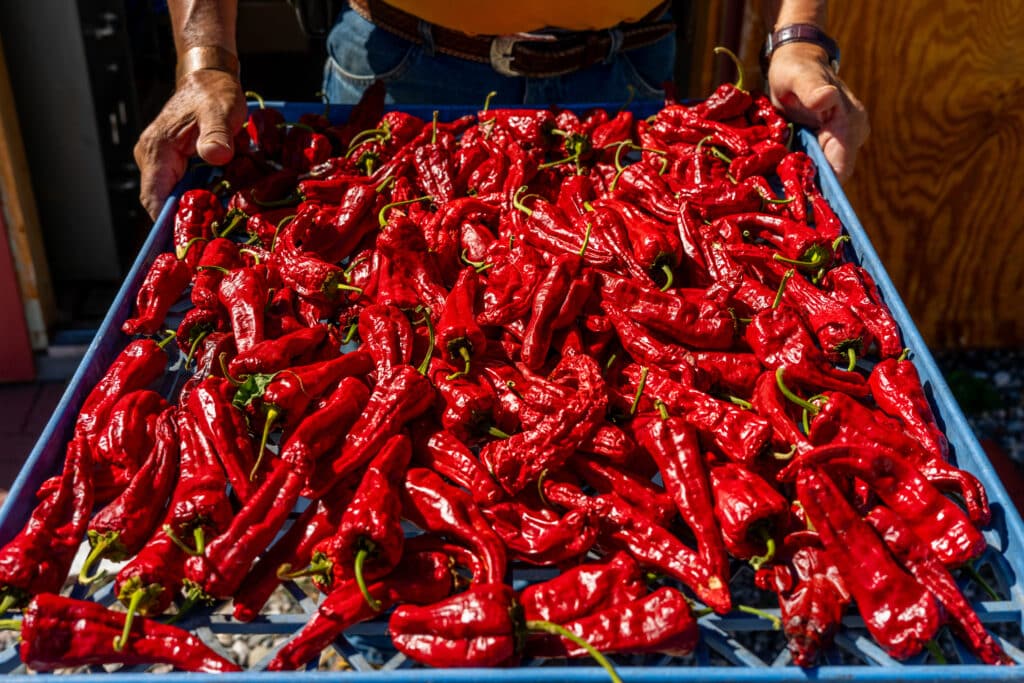The spicy journey of chili peppers goes through the annals of history. From their ancient roots in Central and South America to their arrival and transformation in distant lands, the story of chilis is as rich and diverse as their flavors. Join us as we delve into the fascinating tale of how these fiery fruits captivated cultures, shaped cuisines, and left an indelible mark on the global palate.

It All Began In Asia
According to Brian Dott, a history professor at Whitman College and author of The Chile Pepper in China: A Cultural Biography, chilis were not always present in China. Originating from Central and South America, Capsicum plants remained unknown in China until approximately the 16th century. It was during a period of extensive exploration and trade that chilis were introduced to the Chinese mainland.

The earliest documented mention of chili in China can be traced back to 1591, although it wasn’t greeted with enthusiasm. Gao Lian, a playwright who resided near present-day Shanghai, did not regard it highly either as a condiment or a medicinal ingredient, as noted by Dott. Instead, he utilized it primarily as an ornamental plant.
Making History
Chili peppers took a unique path in China’s culinary history, unlike other spices, bypassing conventional trade routes. Passed from person to person and cultivated in small plots, skilled farmers gradually improved their breeds. Soon, these peppers and the fiery condiments derived from them became indispensable across Chinese society, ingrained in the nation’s identity.

Even in politics, they held sway; Mao Zedong’s fondness for spicy cuisine from his native Hunan region lent chili a symbolic role, equating it with strength and revolution.
Crisp Ahoy
By the 20th century, chili fried in oil had become a household and restaurant staple. However, it wasn’t until 1997 that chili crisp was commercially produced and sold on a large scale, with Tao Huabi introducing Lao Gan Ma Spicy Chili Crisp from China’s Guizhou Province. The condiment quickly gained global popularity, catapulting Huabi to a fortune estimated at $1.05 billion, thanks to its zesty flavor and numerous innovative variations.

Courtesy: The Times and Democrat
Despite its success, one Lao Gan Ma chili crisp containing beef remains unavailable in the U.S. due to agricultural import regulations.
Producing significant impacts
The Chili crisp has accumulated amazing popularity. Its popularity has led to a variety of creative uses beyond traditional cuisine. Some adventurous food enthusiasts have incorporated it into unexpected dishes like ice cream, cocktails, and even desserts, adding a spicy kick to sweet and savory treats alike.

Courtesy: SGK Planet
For Dott, this reflects the passionate reactions evoked by a food with such bold flavor. “You can learn a lot about a culture through food,” he remarks. From medicinal uses to trademark disputes, it appears this condiment will continue to spice things up for the foreseeable future.
The Best crisps
Here are a few noteworthy brands to keep an eye out for: Momofuku, Lao Gan Ma, Fly by Jing, S&B Umami Topping, Junzi, and Mama Teav’s. You can typically find them at retailers like Target, Costco, and various general stores throughout the HV.
The demand for spicy food is on the rise, with over half of all consumers worldwide seeking out hotter flavors, as per a global trends survey conducted by Kalsec, an American food and spice manufacturer.

Chili crisp offers remarkable versatility. It can be sprinkled on pizza, noodles, dumplings, grilled cheese, fried eggs, avocado toast, and even vanilla ice cream. For an extra kick, try incorporating it into salad dressings or aioli.
This condiment is crafted by infusing Chinese peppers and chili flakes into neutral oil, then blending it with fermented soybeans and fried garlic or onions. The result is a spicy flavor with the delightful texture reminiscent of crispy bacon bits.







